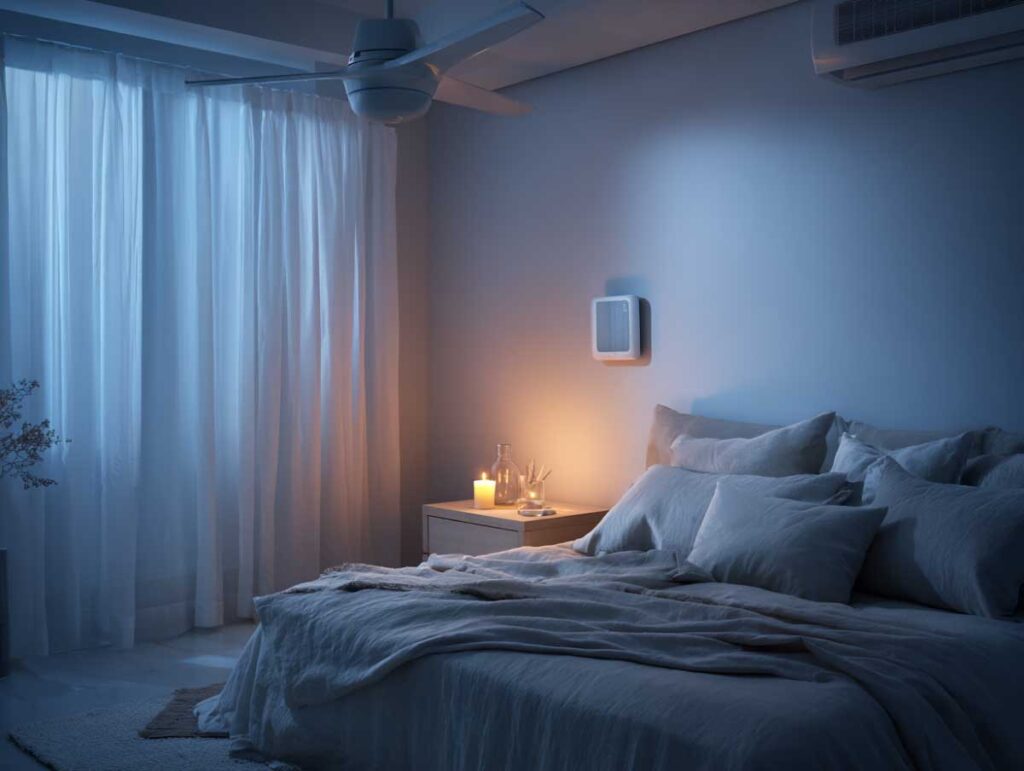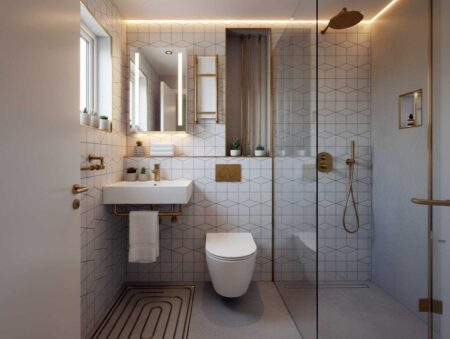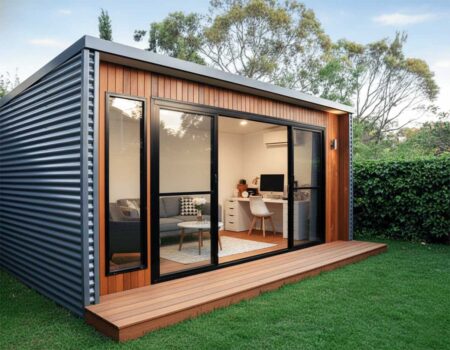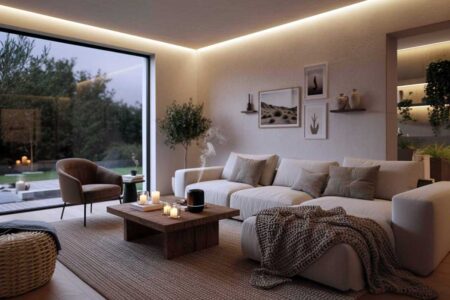A good night’s sleep isn’t just about a comfy bed, it’s also about keeping your room at the right temperature. Your HVAC system plays a big role in creating that perfect sleep environment, helping you stay cool, comfortable, and on track for true beauty rest.
Best Sleeping Temperature for True Beauty Sleep
Your body treats sleep like a carefully choreographed performance, and temperature is part of the stage setup. In the evening, your core temperature naturally drops by about 1-2°F to signal it’s time to rest. This drop triggers hormonal changes like increased melatonin and reduced cortisol. If your bedroom is too warm or too cold, the cooling process is disrupted, delaying deep sleep and leaving you with more light sleep instead of restorative deep and REM stages.
Poor sleep doesn’t just make you feel groggy, it shows on your face. Without enough deep sleep, your body produces more cortisol (the stress hormone) and less human growth hormone, essential for skin repair. In this stage, blood flow to your skin increases, delivering nutrients and boosting collagen production. When the sleep temperature is off, you spend less time in that repair zone, waking up with puffier eyes, duller skin, and sometimes more pronounced fine lines or breakouts because your overnight skin barrier recovery was cut short. Essentially, your thermostat can be your secret beauty tool, or your hidden saboteur.
Sleep Temperature Backed by Science
Most sleep scientists agree that 60-67°F (15-19°C) is the sweet spot for adults, while children and elderly people may prefer it slightly warmer, around 65-70°F (18-21°C), because their thermoregulation works differently. This range supports your body’s natural overnight cooling process, reduces wake-ups caused by heat discomfort, and helps maintain a steady heart rate and breathing pattern, both essential for quality sleep.
This is widely recognized as the best sleeping temperature range for most people. Temperature stability is just as important as the number itself. Rapid shifts, like an AC that blasts cold air for 15 minutes, then shuts off, can cause micro-awakenings you don’t remember but that fragment deep sleep. The true “ideal” is a consistent, slightly cool environment with less than a 2°F swing all night. When you find your own good sleeping temperature within this range, you’ll fall asleep faster and wake up more refreshed.
Hot Weather and the Best Temp to Sleep
When nights are warm, the goal is to help your body shed heat efficiently by addressing both the room temperature and your personal “sleep microclimate”, the few inches of air between your skin and bedding where the real battle happens. Knowing how to sleep in hot weather starts with managing both the environment and your body’s heat release.
Pre-cool yourself before bed with a lukewarm shower to encourage heat release through skin vasodilation. Choose breathable bedding like cotton, linen, or bamboo instead of synthetics that trap heat. Cross-ventilate your room by placing a fan near a window to pull in cooler air and push hot air out, or position a fan to blow across a bowl of ice for cooler air circulation. Use a ventilated bed base or slatted frame to let heat escape downward. For an extra boost, freeze your pillowcase briefly before bed (wrapped in a bag to avoid moisture) or sleep with one foot uncovered, feet are rich in blood vessels and act as natural heat vents.
This approach works with your body’s own cooling systems instead of trying to overpower them. Following these tips for sleeping in hot weather can help you maintain a more comfortable sleeping temperature all night long.
Tips for a Comfortable Sleeping Temperature
The key is to help your body’s cooling curve start before you even lie down. Hydrate smartly by drinking water throughout the day, not right before bed, to avoid night awakenings. Time a lukewarm shower about an hour before sleep so your core temperature drops as you drift off, aligning with natural circadian signals. Activate “thermal dumping” by immersing hands and feet in cool water for 1-2 minutes, or cool pulse points, wrists, ankles, and the back of your neck, with a cold compress.
Pre-cool your bed by tossing sheets in the freezer for 10 minutes (in a bag to avoid moisture). Choose light, moisture-wicking sleepwear and keep a sheet handy if you get chilled at dawn. If your mattress traps heat, add a gel-infused or ventilated topper. Combining environment cooling with body cooling gives you a higher chance of uninterrupted REM cycles, so you wake feeling mentally sharper. The right strategies can help you discover the best temp to sleep for your unique comfort level.
Climate Control for a Good Sleeping Temperature
Climate control is like having a backstage crew for your nightly performance, they adjust conditions so your body can stay focused on rest. Air conditioning, heat pumps, and fans can all help keep the room in the ideal range without big swings, while fans create airflow that speeds up sweat evaporation, your body’s natural cooling method.
Smart thermostats can be programmed to follow your natural circadian pattern, gradually cooling in the first half of the night as your body temperature drops, then slightly warming before you wake. This consistency reduces micro-awakenings that fragment sleep, leaving you more restored in the morning.
Fans and AC work even better with directional airflow, pointing air toward your lower body helps cool core temperature without drying your face and hair. This steady environment helps you maintain the best sleeping temperature for your body’s recovery.
Sleep Temperature and Your Morning Glow
A cooler room helps regulate hydration and oil balance in the skin, reduces inflammation, and limits overnight sweating, which can clog pores, irritate the scalp, or cause frizz. It also reduces transepidermal water loss (overnight dehydration through the skin), so you wake with plumper, more elastic skin.
Cooler temperatures help you reach deep sleep stages where growth hormone peaks, aiding in skin cell turnover and collagen production. In short, the right temperature is like giving your skin and hair an overnight spa treatment or built-in beauty routine, without adding a single serum. Choosing a comfortable sleeping temperature helps you wake up with clearer skin, shinier hair, and more energy.
Keeping the Best Sleeping Temperature Year-Round
Think of your bedroom as a living ecosystem, adjust light, airflow, humidity, and temperature as the seasons shift so your sleep environment always matches your body’s needs. Swap bedding seasonally: light, breathable fabrics or a lightweight duvet in summer; insulating layers or a warmer duvet in winter.
Use a smart thermostat to automate small seasonal adjustments instead of relying on guesswork. Control humidity between 40-60%, a humidifier in winter prevents dry skin, while a dehumidifier in muggy summers helps sweat evaporate faster. Block summer heat with blackout curtains and insulate against winter drafts, and place your bed to avoid exterior walls in winter or direct sunlight in summer.
Maintain under-bed airflow to prevent heat buildup, and consider thermal zoning, cooling just the bedroom for energy efficiency and precision. Over time, these tweaks keep your sleep environment consistent without fighting seasonal extremes. With a little planning, you can enjoy a good sleeping temperature no matter what the weather brings.






